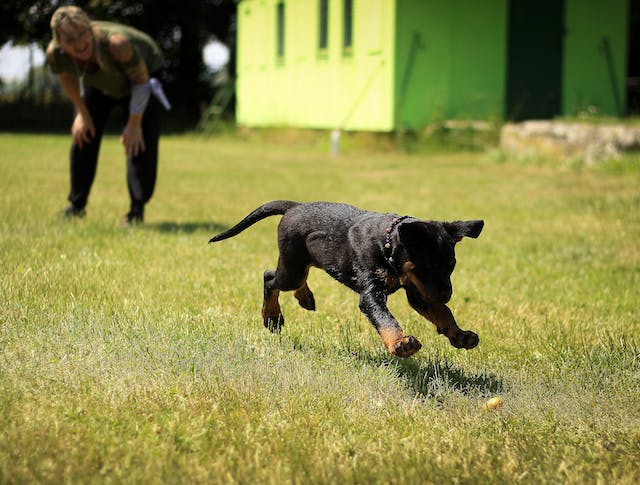
I know what you are dog, Dogs are often affectionately called man’s best friend, and for good reason. They bring a sense of Happiness, companionship and loyalty to our lives that few other animals can match. However, beneath their cute exterior lies a complex and fascinating world of behaviors, quirks and expressions. As dog lovers, we’ve all found ourselves staring into the eyes of our canine companions, I know what you are dog, but what’s really going on inside that sweet head? In this comprehensive exploration, we’ll embark on a journey into the captivating world of canine behavior. Our aim is to delve deeply into the intricacies of our beloved four-legged companions, gaining insight into what drives their actions and discovering ways to establish a more profound connection with them.
Table of Contents
i know what you are dog.
The Language of Tail Wagging:

Let’s begin our journey of understanding by examining the iconic Tail wag. It’s the universal symbol of canine happiness, right? Well, not at all. Contrary to popular belief, not all tail waves are created equal. Dogs convey a lot of information through their tails, from their level of excitement and happiness to their anxiety and caution. Understanding the subtleties of tail wagging is a fundamental step in understanding your dog’s emotions and needs.
At first glance, a vigorously wagging tail may seem like an obvious sign of happiness. However, context must be considered. For example, a stiff, high tail wig can be a warning sign that your dog is feeling stressed or anxious. On the other hand, a relaxed, low wig usually indicates a content and approachable demeanor. By paying close attention to the details of your dog’s tail movements, you can gain valuable insight into their emotional state and ensure a happy and healthy relationship.
Canine Emotions: Happiness, Fear, and Everything In Between.
Dogs, like humans, go through a variety of emotions throughout their lives. They feel joy when you come home after a long day, fear during a storm, and even love when they snuggle up to you on the couch. However, their expressions of these emotions are often quite different from ours, making it important to familiarize yourself with their unique emotional language.
Happiness: Happiness in dogs is often shown through excited behaviors such as tail wagging, jumping and playful movements. Their faces can break into a wide, open-mouthed “smile” or a relaxed expression with relaxed ears and a wagging tail.
Fear: Dogs show fear in a variety of ways, from shivering to fear-avoidance behavior. Their tails may be tucked between their legs, and their ears may be flat against their head. Understanding the signs of fear can help you calm and reassure your pet during stressful situations.
Love and attachment: Dogs form strong bonds with their human companions, and they show their love in a number of ways. These include cuddles, snuggles with you, and soft nozzles. Recognizing these signs of affection can deepen the bond between you and your dog.
Understanding your dog’s emotional spectrum is vital to ensuring their well-being. This allows you to respond appropriately to their needs and provide the support and care they need in different situations.
The Art of Barking: What’s Your Dog Trying to Say?

Barking is perhaps the most recognizable form of canine communication, and is a powerful way for dogs to express their thoughts and feelings. However, not all bark is created equal, and each type conveys a different message. Here’s a breakdown of some common blisters and their meanings:
Playful Bark: A playful bark is often accompanied by a wagging tail and cheerful disposition. It’s an invitation to engage in fun activities and games with your dog.
Alert Bark: When your dog sees something unusual or senses potential danger, he may emit a series of short, sharp barks. This is their way of alerting you to the presence of something unusual.
Territorial Barking: Dogs are known for their protective instincts, and territorial barking is a way of showing their presence and protecting their home turf. It can be triggered by strangers near your property.
Lonely or annoying barking: If your dog is feeling lonely, anxious, or bored, he may bark constantly to get attention or to ease his discomfort. Understanding the underlying cause of this behavior can help address their emotional needs.
Fearful or Aggressive Barking: Fearful or aggressive barking often accompanies physical stress. This is a warning sign that your dog feels threatened or unsafe. In such situations, it is important to take precautions and ensure safety.
By carefully listening and observing your dog’s barking as well as his body language, you can gain a deeper understanding of what he is trying to communicate. This, in turn, allows you to respond appropriately and effectively address their needs.
The Mystery of the Canine Nose:

By carefully listening and observing your dog’s barking as well as his body language, you can gain a deeper understanding of what he is trying to communicate. This, in turn, allows you to respond appropriately and effectively address their needs. One of the most striking aspects of a dog’s physiology is their extraordinary sense of smell. It is often said that when humans see the world, dogs smell it. But what makes their sense of smell so extraordinary?
First, consider the numbers:
A dog’s nose has an estimated 220 million St receptors, compared to just 5 million in ours. This astonishing olfactory ability allows them to detect scents at incredibly low concentrations, making them expert trackers and heroes of search and rescue.
Second, their noses are equipped with a scent processing center called the Jacobson organ or vomeronasal organ. This organ enhances the ability to detect and interpret pheromones, chemical signals that provide important information about other animals’ emotions, reproductive status, and more.
Dogs use their keen sense of smell for a variety of purposes, including:
Tracking: Dogs have been used for tracking and hunting for centuries because of their ability to follow scent trails over vast distances.
Search and rescue: Canine search and rescue teams are invaluable in locating missing persons in disaster areas.
Medical detection: Some dogs are trained to detect medical conditions such as cancer and low blood sugar by detecting specific scents.
Emotional Detection: Dogs can also sense human emotions through chemical changes in our bodies, providing comfort in times of stress or sadness.
Appreciating your dog’s incredible nose abilities can deepen your appreciation for their sensory world and encourage you to engage in activities that utilize their natural abilities, such as That scented games and puzzle toys.
The Intricate Dance of Play:

Play is an essential aspect of a dog’s life, and it plays an important role in their development, socialization, and overall well-being. By understanding the dynamics of play, you can provide your dog with a fulfilling and enjoyable life.
Play takes many forms in the canine world, from hanging out with other dogs to interactive games with their human companions. Here are some important insights into the role of play in your dog’s life:
Socialization: Dogs learn valuable social skills through play. They explore boundaries, practice bite prevention, and develop communication skills by interacting with littermates and other dogs.
Exercise: Play provides physical exercise, helping to maintain your dog’s overall health and prevent obesity. Engaging in activities like fetch, tug-of-war, and agility training can keep your dog active and fit.
Mental stimulation: Playing also stimulates your dog’s brain. Puzzle toys and interactive games challenge their problem-solving skills and prevent boredom.
Playtime serves as a wonderful opportunity to strengthen the bond you and your canine companion share, develop trust, improve communication, and deepen your connection.
Emotional outlet: Dogs can release stress and anxiety through play. It is a constructive way for them to channel their energy and emotions.
Understanding the importance of play in your dog’s life allows you to create an environment where they can thrive. Whether it’s a fetch game at the park or a fun puzzle toy at home, providing play opportunities contributes to your dog’s happiness and well-being.
Unraveling the Mystery of Dog Dreams:
Have you ever found yourself observing your sleeping dog and pondering the intriguing question, “Do dogs dream?” Absolutely, and this aspect of canine behavior is indeed quite fascinating.
Research shows that dogs experience different sleep cycles, including REM (Rapid Eye Movement) sleep, which is associated with dreaming in humans. During REM sleep, dogs can exhibit various physical and behavioral responses that resemble actions they perform while awake. For example, you may notice your dog twitching, pawing, or muffled barking sounds during REM sleep. These movements and sounds indicate that the dog is indeed dreaming.
But what do dogs dream about? Although we cannot know for sure, it is reasonable to assume that their dreams are influenced by their daily experiences and activities. A dog who likes to chase balls may dream of a never-ending game of fetch, while a dog who likes belly rubs may dream of being pampered and loved.
Understanding that dogs dream allows us to appreciate the complexity of their inner world. It’s a reminder that our canine companions not only share our waking lives, but also have rich and vivid dreams capes of their own.
The Power of the Canine Bond:
The bond between humans and dogs is one of the deepest and most enduring bonds in the animal kingdom.
This connection is forged through trust, companionship, and a shared bond of affection. But what exactly makes this bond so special, and how does it benefit both humans and dogs?
Oxytocin, the “love hormone”:
When you interact with your dog, both you and your pet experience an increase in oxytocin, often called the love hormone or bonding hormone. Oxytocin is associated with feelings of love, trust and connection and plays an important role in strengthening the human-dog bond.
Emotional support: Dogs provide unwavering emotional support to their human companions. They’re always there to lend a listening ear (or a wagging tail) when you’re feeling down, stressed, or lonely.
Physiological Benefits: Research has shown that spending time with dogs can lower stress levels, lower blood pressure, and even prolong life. The simple act of petting your dog can release feel-good chemicals in your brain.
Companionship: Dogs offer companionship and unconditional love, helping to alleviate feelings of loneliness and isolation.
Shared experiences: Whether it’s going for a walk, playing fetch, or sitting on the couch, shared experiences between humans and dogs create lasting memories and strengthen the bond.
Service and therapy dogs:
Dogs also play an important role as service and therapy animals, assisting people with disabilities, providing comfort in health care settings, and offering support in times of crisis.
The human-dog bond is a testament to the strength of interracial relationships. It enriches our lives in countless ways and reminds us of the deep connection that can exist between humans and animals.
The Canine Intellect: How Smart Are Dogs?
Dogs are often praised for their loyalty and affection, but they are also incredibly intelligent animals. While they may not be writing novels or solving complex math problems, they have a remarkable level of intelligence that deserves recognition and exploration.
Canine intelligence consists of various aspects, including:
Problem-Solving: Dogs are capable of solving a wide range of problems, from figuring out how to get to a treat hidden in a puzzle toy, to finding the best route through an agility course.
Emotional intelligence: Dogs are highly attuned to human and canine emotions. They use subtle cues, such as body language and tone of voice, to understand how others are feeling.
Communication: Dogs communicate with both humans and other dogs through a combination of vocalizations, body language, and facial expressions.
Memory: Dogs have impressive memories, allowing them to remember people, places and routines. This memory is often revealed when they look forward to a daily walk or recognize familiar faces.
Social Learning: Dogs are skilled social learners. They can observe and imitate the behavior of other dogs and even humans, which is why training and socialization are so effective.
Problem-Solving: Dogs are capable of solving a wide range of problems, from figuring out how to get to a treat hidden in a puzzle toy, to finding the best route through an agility course.
Understanding your dog’s intelligence can help you tailor their training and enrichment activities to their cognitive abilities. Whether it’s teaching them new tricks, providing mental stimulation through puzzle toys, or engaging in interactive games, nurturing your dog’s intelligence can lead to a happy and fulfilled.
.
Doggie ESP: Can Dogs Sense Our Emotions?
Have you ever experienced a difficult day and noticed that your dog understands your feelings? This incident is not a mere coincidence. This is a testament to dogs’ remarkable ability to understand human emotions.
Numerous studies have shown that dogs can recognize a wide range of human emotions, including happiness, sadness, anger, and fear. They do this by noticing changes in our facial expressions, body language, and even our scent.
Here’s how dogs can sense our emotions:
Facial Expressions: Dogs are adept at interpreting human facial expressions. They can distinguish between a smiling, relaxed face and a dull, stressed expression.
Tone of voice: Dogs can detect changes in the tone of our voice. A calm, gentle tone often comforts them, while a harsh or angry tone can make them uncomfortable.
Body language: Dogs pay close attention to our body language, including posture, gestures and movements. They can tell when we are relaxed, agitated, or excited.
Scent: Dogs can also detect changes in our body odor due to stress or anxiety. This is part of their incredible olfactory abilities.
Once your dog understands your emotions, he can respond in a variety of ways:
comfort: Many dogs naturally offer comfort when they sense their owners are upset or worried. They may approach you, offer gentle nozzles, or simply sit next to you.
Mimicking: Dogs can mimic your emotional state. If you are happy and enthusiastic, they can be lively and enthusiastic. If you are calm and relaxed, they can relax too.
Vigilance: When dogs sense fear or danger, they can become more alert and alert, ready to protect and help when needed.
Realizing that your dog can sense your emotions allows you to be more mindful of your own emotions and how they may affect your furry friend. It also emphasizes the importance of maintaining a positive and calm environment in your home to ensure your dog’s emotional well-being.
Conclusion:
I know what you are dog isn’t just a whimsical phrase. It’s an invitation to explore the fascinating world of canine behavior. Dogs are more than just pets. They are companions who communicate with us in their own unique way. By knowing their body language, emotions, instincts and incredible senses, we can deepen our connection with them and give them the love and care they deserve. So, the next time you look into your dog’s eyes, remember that there is a world of mystery and wonder waiting to be discovered, and it’s worth the journey.
What does the phrase “I know what you are, dog” mean?
The phrase is a playful and whimsical way to express our curiosity about what’s going on inside a dog’s mind. It invites us to explore the mysteries of canine behavior and understand our furry friends on a deeper level.
Why is understanding canine behavior important?
Understanding canine behavior is crucial for building a strong bond with your dog and ensuring their well-being. It allows you to respond to their needs, communicate effectively, and provide the love and care they deserve.
How can I decode my dog’s tail wagging?
Tail wagging is a form of canine communication. To decode it, pay attention to the context, the height and stiffness of the tail, and the dog’s overall body language. These factors can provide valuable insights into your dog’s emotions.

One Reply to “I Know What You Are Dog.”